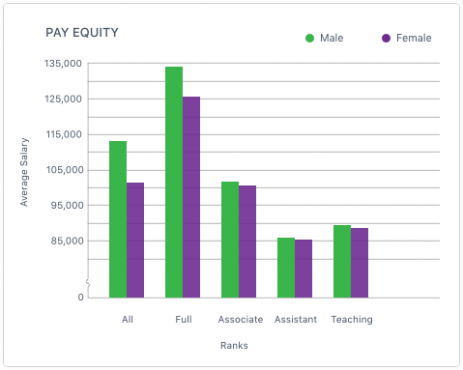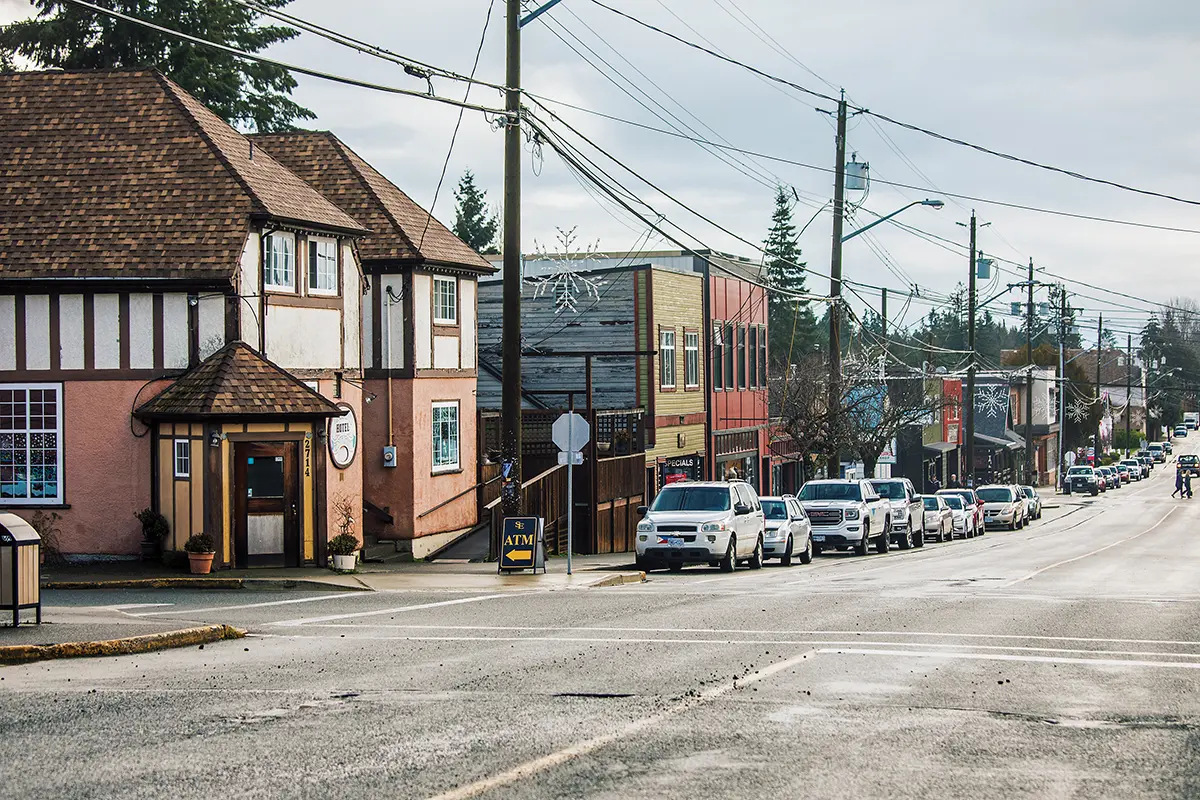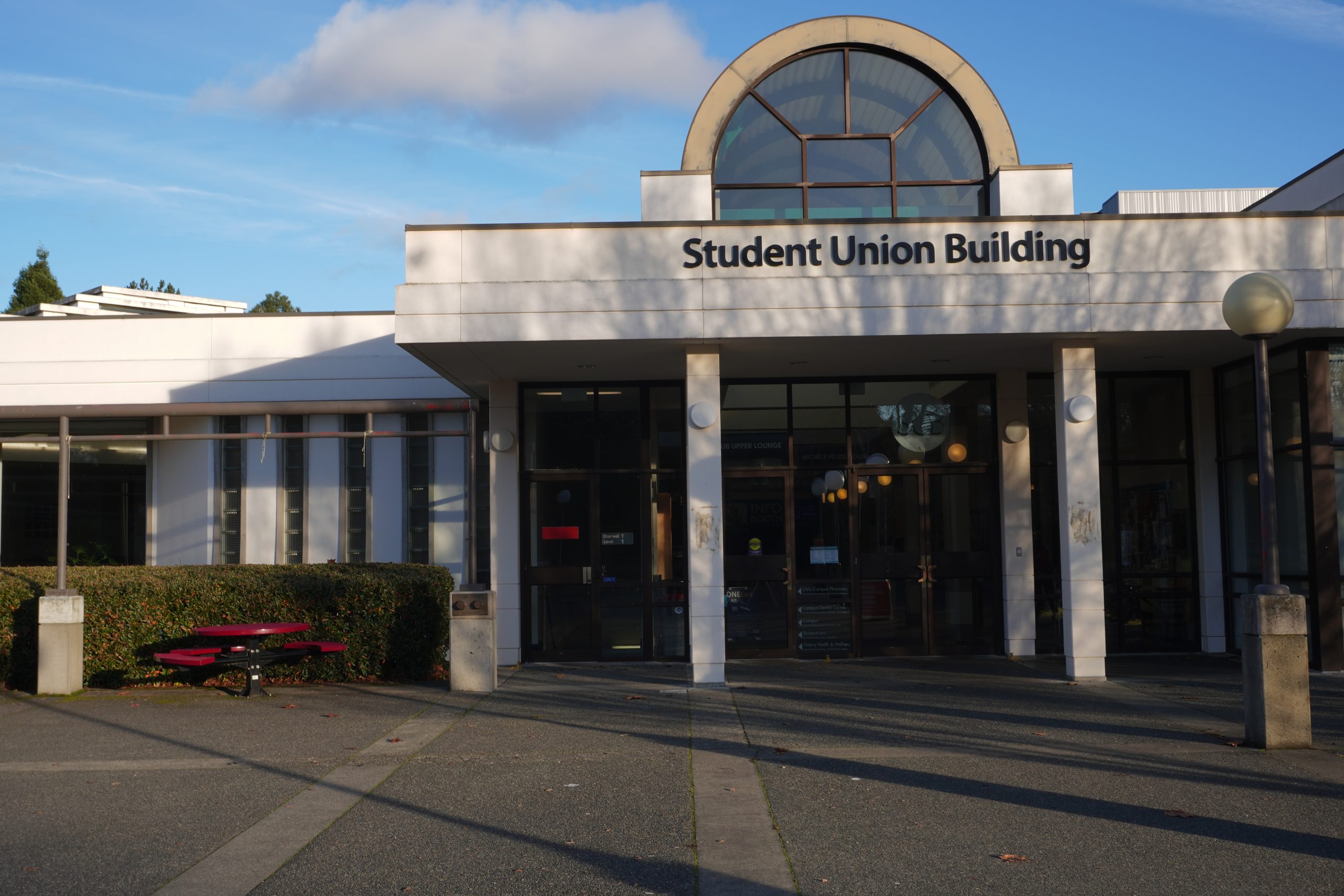Grace Wong Sneddon, the adviser to the provost on equity and diversity, smiles as she points up to the framed certificates that hang on the wall of her office.
“I hear people go, ‘what are you worried about? Stop worrying so much — you’ve got six of those things,’” Wong Sneddon says.
She’s pointing at diversity awards — won by UVic for meeting or exceeding national diversity criteria among its student, staff, and faculty community. There are five on the wall.
“The other one is up in the president’s office,” Wong Sneddon laughs.
Although Wong Sneddon and UVic understand that certificates only play a small part in the conversation around diversity in academia (Wong Sneddon acknowledges that relying solely on awards can make a university “complacent”), there is no doubt that they are proud of these awards.
When the university won its latest piece of recognition — named as one of Canada’s Best Diversity Employers for the sixth year in a row — UVic president Jamie Cassels was happy to talk about the merits of having a diverse and equitable community.
“Diversity underpins excellence,” Cassels said at a Senate meeting after the win, reassuring those gathered that UVic was meeting and exceeding its equity targets.
Despite UVic’s accolades, however, the lived experiences of faculty, staff, and students paint a vividly different picture.
Dr. Jo-Anne Lee | Professor of Gender Studies
Dr. Jo-Anne Lee, a long-time professor in UVic’s gender studies, has been teaching at UVic for 21 years. She says things aren’t improving as much as people think.
“I’ve waited for this university to really blossom, and it hasn’t. Really, it’s the status quo, nothing much has changed,” Dr. Lee says.
Part of the problem, according to Lee, is that UVic isn’t that open to talking about whiteness.
“It’s taboo to talk about whiteness,” Lee says. “If we could actually get people to not be scared of naming whiteness, we could begin to interrogate the positive and the negative aspects of a white cultural formation . . . how a cultural formation organized around white heterosexual masculinity has become so dominant and so hegemonic and so accepted and so common sense that now we can’t even talk about it.”
In addition to frank conversations regarding cultural formation (in order to pursue meaningful progress), diversity must be addressed beyond the surface level at which UVic seems to currently be working.
“In terms of objective indicators, like this diversity award, for example, we’re apparently at the top,” Lee says. “[However] if you really want to make a distinction, an easy distinction, you can talk about surface diversity and deep diversity. So those [diversity] indicators might paint a very nice picture of surface diversity — which is, you look around campus and you think ‘oh, this is a very diverse campus’ – but you scratch the surface of it and you begin to see that that diversity is located in particular pockets. When you generalize the figures out, it masks a lot of non-diversity.”
The distinction between surface and deep diversity is critical.
“Deep diversity means that you fully feel like you belong,” Lee says. “Any way you want to slice an examination of an institution, you can find indicators of diversity, because diversity isn’t attached to individuals. A simple word for diversity is ‘acceptance of difference.’ But in fact, we are intolerant of difference.”
Dr. Janni Aragon | Director of Technology Integrated Learning
Dr. Janni Aragon has witnessed that intolerance firsthand.
“It was just terrible, the way in which I was treated,” she says, speaking about the contempt and outright racism she faced while conducting research at an elite college’s archives in the States. “It was like I was completely disgusting and didn’t belong there.”
Now, Aragon is UVic’s Director of Technology Integrated Learning and will be the Director of the Technology and Society program at UVic as of July 1, 2017. She is also in the process of finding new Professional Employee Association (PEA) staff members for her department, using what is known as preferential hire.
A preferential hire is a hiring process in which a department can specifically look for a demographic they feel is not represented well enough within a team.
Six months ago, after realizing that all members of her support team were male, Aragon decided to move forward with a preferential hire. So Aragon spoke with HR, provided information about her current team, and explained her concern about a lack of women. With the approval of the associate vice president academic, Nancy Wright, Aragon was able to proceed.
At the time of our interview with Aragon, two days prior to the application closing date in her department, she says about 80 per cent of the applicants are men, despite a bolded note in the job posting that stated she was looking for female candidates.
“[The most] interesting thing about this, though,” Aragon says, “is that when I’ve talked to colleagues about this off-campus, they said ‘well are you going to interview qualified women?’ And I’ve corrected and said, ‘why would you say qualified?’
Of course they’re going to be qualified because they’ve read [the posting] and they’re applying. And don’t make this some sort of exercise for you to knee-jerk and say this is unfair for men, because somehow all of them are qualified — because it makes that assumption.”
The reason preferential hires are so important, Aragon says, is that it empowers everybody — from new PEA staff to faculty to the students they teach.
“You need to see yourself,” she says. “I never had a Mexican-American woman instructor as an undergrad. Ever. I had two male Mexican-American instructors as an undergrad — and so I often think, you know, that when African-American students have a professor in their particular department . . . the student will often think ‘oh, you were able to do this. I can do this. I can finish,’ especially if they’re first generation and this hasn’t been normalized to them, the whole college experience.
“I think it also sends a message to all the students,” Aragon says, smiling, “that the array of their professors come from different backgrounds and there’s not some pods over in Finnerty Garden where we grow white men, you know, [and] put them in blazers with leather on the elbows.“
Though she acknowledges there is more work to be done, Aragon believes she is in the right place to make important change happen. Aragon has participated in several committees at UVic dedicated to studying and increasing diversity (Aragon was the Chair of the Academic Women’s Caucus and has sat on the Educational Equity Advisory Group and the Employment Equity Advisory group) and believes that important work is happening at the university.
“Can we do more? Sure, of course we can. And I want us to do more. But I think there’s also this moment to stop and say, ‘good job, what’s next?’” Aragon says. “Because we can’t rest on our laurels and think ‘okay, we’ve already done this.’ It’s ongoing.”
Dr. Caterina Valeo | Professor of Engineering
Unfortunately not everybody shares Aragon’s optimism.
Dr. Caterina Valeo has been teaching in UVic’s engineering department for five years when she was brought to the university to help develop a civil engineering program. Since then, she says, she has experienced instances of sexual discrimination and a general unwillingness to change the toxic environment female faculty members face.
“What happens here on the ground, every day, those sort of subtle gestures, the subtle exclusion, the fact that you’re ignored — it happens every day. It’s unlike anything I experienced at the University of Calgary or at the University of Manitoba. This is the worst place I’ve ever worked for this kind of thing.”
One of the most frustrating things for Valeo is the disconnect between the public image of UVic and her day-to-day experiences. She talks about the Michael Williams Building, home to the offices of UVic’s president Jamie Cassels and the rest of administration, with disdain.
“There’s such a gap, a void, between that building and everyone in it, and what they portray to the public,” Valeo says. “Perception is everything here.”
The fact that UVic has won awards for its diversity despite her experience at the university upsets Valeo. Just thinking about it, Valeo says, “I get sick to my stomach and there’s nothing I can do about it.”
Despite these diversity awards, the numbers themselves tell a very different story. For example, there are 39 male professors in UVic’s engineering department and only nine female — the lowest percentage of female professors (18.8 per cent) of any faculty at UVic. Additionally, a 2014 study found that salary gaps at UVic are also an issue, with male professors earning an average wage of $8 700 more than their female counterparts.
For Valeo, the financial differences underscore her belief that the problem isn’t just hiring — it’s retention as well.
“What I saw was a lot of female faculty just leaving after assistantship . . . or after being an associate,” Valeo says. “They just don’t stay because the environment is not there to keep them.”
That environment, Valeo says, is cultivated by those in charge. There can be no meaningful change without cooperation from department chairs, Deans, and all UVic admin positions. For now, Valeo says, that cooperation is not there.
“It’s good leadership, and that’s lacking here,” Valeo says. “You have to have good leadership, one that understands the issues, understands unconscious bias that you have in hiring practices. Simple things like we all wanna hire people who are most like ourselves. It’s the human condition. You have to work against that which means being self-aware, and people here are just not self-aware, it seems.”
Valeo says she feels tired of the work she has to do simply to survive in her department. It’s to be expected, then, that she finds it difficult to recommend a similar career choice for any female students.
“I’ll be honest,” Valeo says, sighing. “If I had a choice, I would have not gone into it. I would not become an academic.
“I don’t want to deter [future female professors], because if that’s their dream is to do research, I think they should be mentored and given an environment to do that — not here, maybe, maybe at some other university. But not this one.”
Zoë-Blue Coates | Student
Zoë-Blue Coates, a third-year history and French student, is exactly the person Valeo is talking about — she has dreamed about becoming an academic researcher for years. But even though she is only halfway through an undergraduate degree, her friends have already begun to drop off the academic track.
“I know people who have given up now, from their first years,” Coates says. “[They were] like ‘oh, I thought history was for me and now I’m realizing that definitely not.’”
But Coates sees this disconnect as her opportunity to start a career in academia.
“I really love history,” she says, “and I think a large part of why I want to be in academia is because I see a gap in representation for myself. And especially within history, as a black queer person, representation of black queer history doesn’t exist in Canada.”
For Coates, the idea of diversity is a complicated one. She worries that the idea of a diverse academia primarily serves the purposes of the university, not the academics being hired.
“I don’t think tokenization is seen as a bad thing when it’s used as a marketing tool,” she says, emphasizing that hiring someone from a minority group solely to satisfy a diversity quota places an unfair amount of pressure on that person.
“They’re not coming here to be a token person of colour, they’re coming here to do their job,” Coates says. “And so you’re bringing this person in to: one, be a model person of colour for your faculty; and, two, bring in research [and] then therefore bring in awards for you for diversity. It’s self-serving.”
Coates has a few more years left in her undergraduate degree, and she will complete her time at UVic with a distinct knowledge of the power that professors hold in the classroom.
“If I was a white dude professor, and I was talking about a Filipino case study, how am I talking about [it]? How am I making people in the class feel? Because the way I make the people in the class feel is going to have an effect on their academics,” Coates says. “And that’s what it boils down to. When you paint people in a negative light, when you paint people as a certain stereotype, that reflects on their work and then that impedes from them being able to actually get their work done. Which is setting up barriers, ultimately.”
Christine Sy | Professor of Gender Studies
To Christine Sy, an Anishinaabe professor new to the Gender Studies department, those barriers are primarily structural. For Sy, then, the answer is to examine the true inner workings of the university.
“I always hope to be working with communities [with]in the university community where people are willing to do the hard work of transformation,” Sy says. “I would be very disheartened if I’m expected to just do the work of maintaining the image or the shell of the diversity. I want to get into the nuts and bolts of it.”
Again, Dr. Lee’s comments about surface diversity and deep diversity make their way into the conversation. When Sy is asked about the diversity awards UVic has won, she admits she hadn’t heard about them — but is curious as to the parameters of the awards.
“I feel like there’s diversity that is a shell and an image and a brand. I’m not sure what that motivation is. Is there money attached to it? Who benefits from that shell? That brand? That image? Versus actually doing the inner workings and the hard work of really being diverse.”
For Sy, decolonization is a crucial component of those inner workings.
“I think talking about diversity without talking about decolonization limits the possibilities of diversity and it keeps it within this kind of white-stream meaning,” Sy says. “But decolonization actually would include everybody in a critical way, towards shared power, towards generation of a new world in terms of governance, social institutions, [and] representation.”
——————————————————————————————————
Despite the disagreements and the variety of experiences between each person we interviewed, there were consensuses reached.
All agreed that diversity is an important issue, and that there needs to be more done to increase the diversity of perspectives and opinions in academia.
All agreed that there are too few Indigenous academics; that there need to be more female professors in leadership positions, rather than as assistant and associate professors; and that deceptively simple numbers do not do justice to the full story of diversity.
It is important, too, that those of us who don’t consider ourselves as diverse or as academics engage in this conversation as well. Academia does not exist in a vacuum, and general trends affect professors the same way they affect others as well.
And while there is no simple solution — because this is not a simple issue — Dr. Lee believes the answer starts with systemic change.
“There’s no single recipe, no single initiative [that] is going to do the trick,” Lee says. “At every level of managing this university, this is what the leaders have to think about: ‘I can really deeply transform what I do for this university in a way that truly reflects deep diversity.’”
For an editorial discussing how the Martlet approached this topic and reflecting on the topic of diversity in media, click here.
With files by Paige Bennett.
We have updated the story in regards to concerns around Dr. Janni Aragon’s quotes. We have clarified that Dr. Aragon’s preferential hire was for a PEA staff member, not a faculty member. We have also clarified where Dr. Aragon experienced discrimination in the U.S, as well as added a list of the equity and diversity committees Dr. Aragon has worked with at UVic. We sincerely regret the errors.











